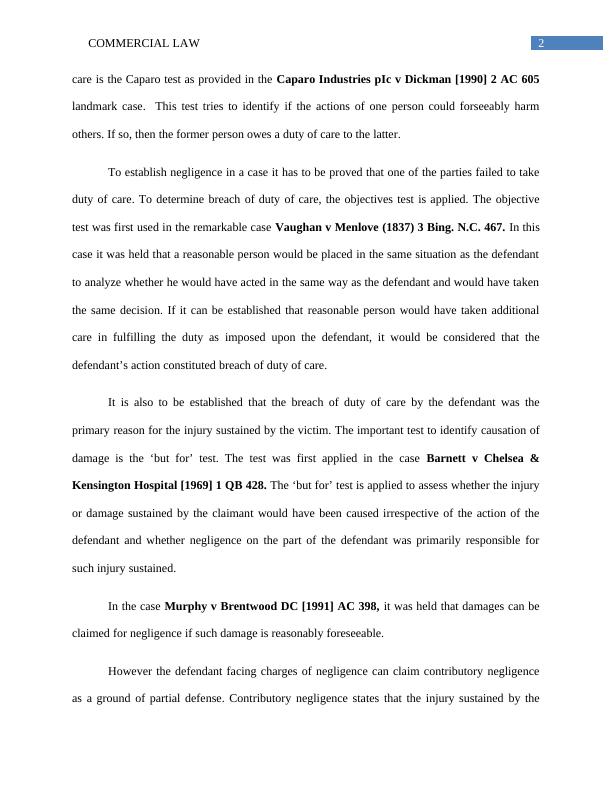COMMERCIAL LAW 1 Running Head: Common Law
8 Pages1447 Words76 Views
Added on 2020-05-16
About This Document
Did Hank’s distributor and Mower owed a duty of care to An, Bruce or Carol under negligence in common law Does Bruce, Ann or Carol have any right against Mowers Ltd or Hank’s Distributor Ltd? The aforementioned case used the principles of the former Donoghue v Stevenson 1932 AC 562 which is a remarkable case dealing with the provisions of the Duty of Care and the Neighbor principle. It is to be stated that the primary test used by the courts to analyze Duty of care is
COMMERCIAL LAW 1 Running Head: Common Law
Added on 2020-05-16
ShareRelated Documents
End of preview
Want to access all the pages? Upload your documents or become a member.
BULAW5914 Commercial Law - Case Study
|8
|1653
|78
Commercial Law Issues - Assignment
|13
|2932
|18
Tort Law: Establishing Negligence and Defense of Volenti Non Fit Injuria
|9
|2482
|62
Australian Corporation Law
|10
|2629
|105
LAW8500 Australian Commercial and Corporations Law Issue 2022
|13
|3509
|13
Understanding Negligence and Pure Economic Loss in Enterprise Law
|8
|1818
|493



